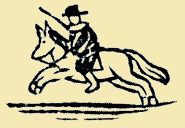- Yes!
- Group Sculptures
- Mirrors
- Sculpture Gallery
- Presents
- Have You Seen My Kitty?
- Magic Hat
- Hotseat, or, The Press Conference
- “I’ll follow you!”: A choral speech
- Three Worlds
- Two-character exchanges
- “Now I am alone”: The soliloquy
- Group voice: Sharing a character
- Showdown: Oberon vs. Titania
- Planning the Project: What do you want your students to achieve?
- Planning the Project: Making room for Shakespeare
- Planning the Project: The Final Performance
- A sample sequence
- Laying the foundation, establishing some rituals
- Preparing for the journey: A checklist
- We shall not cease from exploration

Every Shakespeare project we’ve ever witnessed or assisted in grades K-8 has been an original creation. There are no generic guidelines or curriculum kits for this kind of work – thank goodness!
But we can give you some suggestions about how to map out your first project, based on what we’ve seen work with teachers in grades 4-6.
Most Shakespeare performance projects, whether they are a four-week unit or a yearlong adventure, have a basic pattern, which goes something like this:
- Introduction to the language, the stories, and Mr. S himself, his life and times
- Reading text aloud – beginning to open up a play with discussion, reflection, perhaps even writing, as in any Language Arts unit
- Making the shift to playing the play – deciding on a final text, assigning roles, beginning the work of memorizing lines, gathering simple props, working in scene groups; possibly working on ensemble and play through exercises and improvisations
- Going “off book” – learning all lines, playing the play more freely and expansively, getting the flow and fluency going, layering in pieces of costume and props
- Preparing for the final performance – creating a program, deciding on costume or dress style, inviting an audience, making posters, continuing to improve the performance
- Final performance and post-performance reflection and writing on the experience
- Don’t overextend yourself. Scene work is very consuming, and if you have three or four groups going at once, it means you may only get 10 minutes with each group. So unless you’ve set up the kind of schedule Rafe Esquith has created, working an hour a day after school, it might be best to focus on three or four whole-class scene excerpts and do those really well.
- Turn scenes into whole-group performances. As in the Puck exercise with “I’ll follow you,” we often split up roles to turn a scene into a group event. Instead of one Duke, we might have 5. We might have twin Hermias, or tag-team Bottoms (see “Dueling Bottoms” in the “Texts” section, found on the left navigational bar at the top of this page). This takes some extra preparation time, but it’s worth it. And you’re creating an even more original interpretation of a scene!
- Allow 3-4 weeks of extra time in the schedule. This work always takes longer than one expects. There are days lost when someone is sick, or when a special assembly cancels “Shakespeare time.” So when you map out your project, leave some cushion room. It’s better to have everything really “tight and yare and bravely rigged,” to take a phrase from “The Tempest,” than to be racing to the finish.
- Plan several smaller performances before the big one. Students benefit from having a variety of performances with a mix of audiences. See if a younger class will come visit to watch a 10-minute performance of one section of the play. See if you can do some of it after school for a few guests and other teachers. This helps the kids warm up for the big final performance, and also gives you a chance to work out the glitches that arise (and they will!).
- Keep the final performance intimate. Over time we’ve learned to avoid the big “cafetorium” performances for the whole school. The language is lost in the hubbub. Best to invite parents, siblings, and other teachers and school staff for one or two small performances either in your room (transform it into the enchanted forest!) or some other space where you can control the seating by setting up chairs to mark off a space. It’s nice to do it on a weekday evening, such as 6:30 p.m. on a Thursday, so the kids can have time to get ready after school but aren’t up too late.
